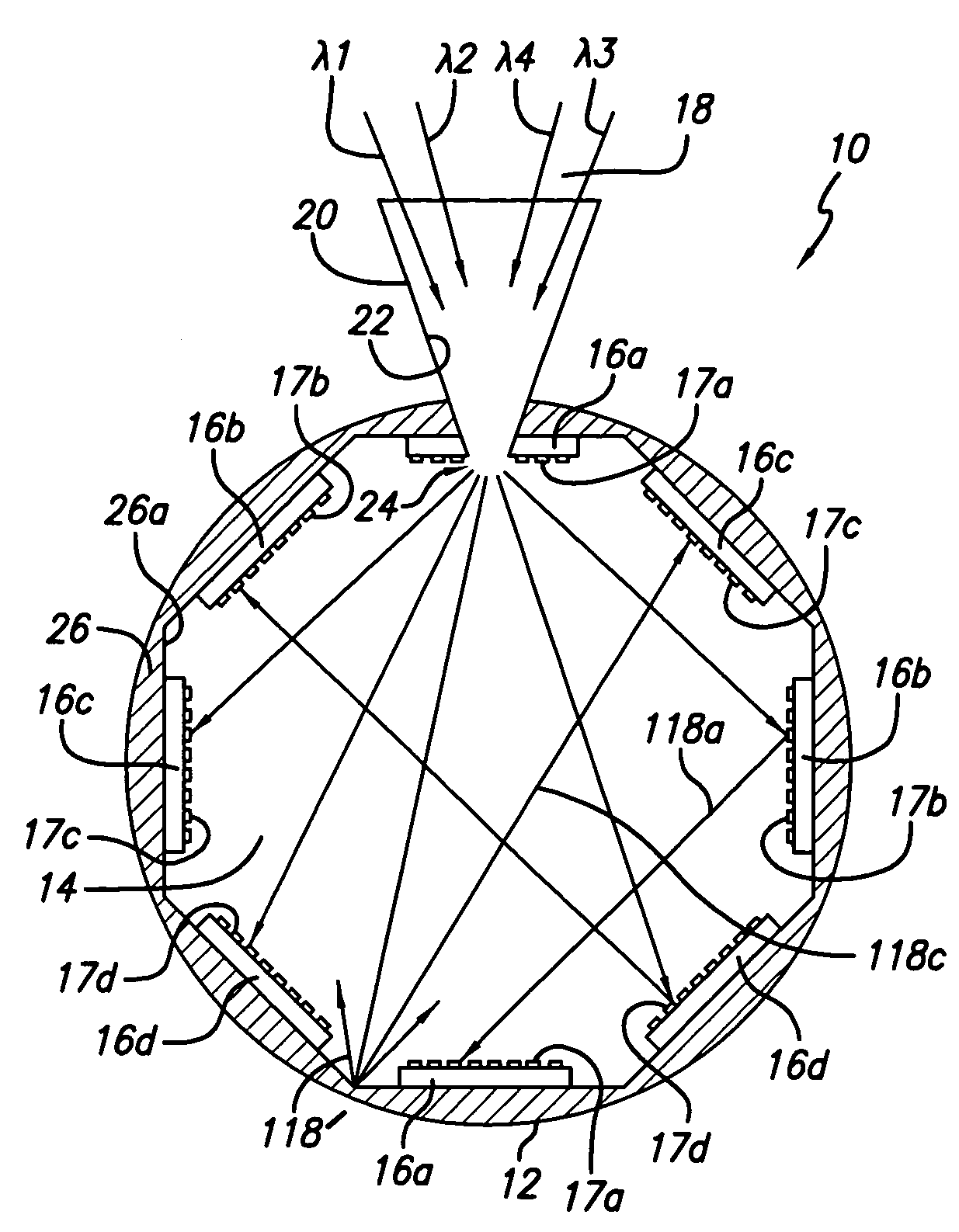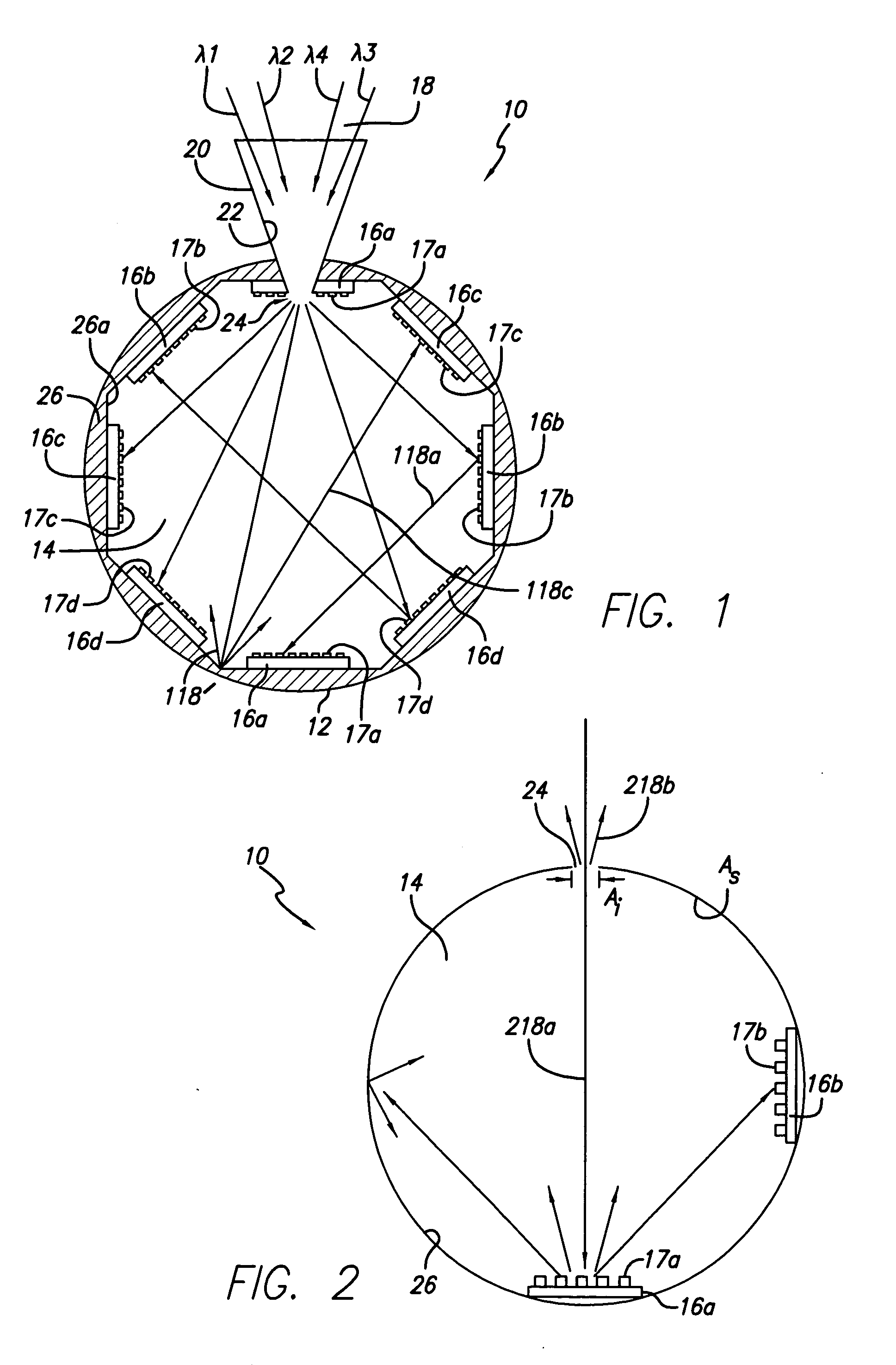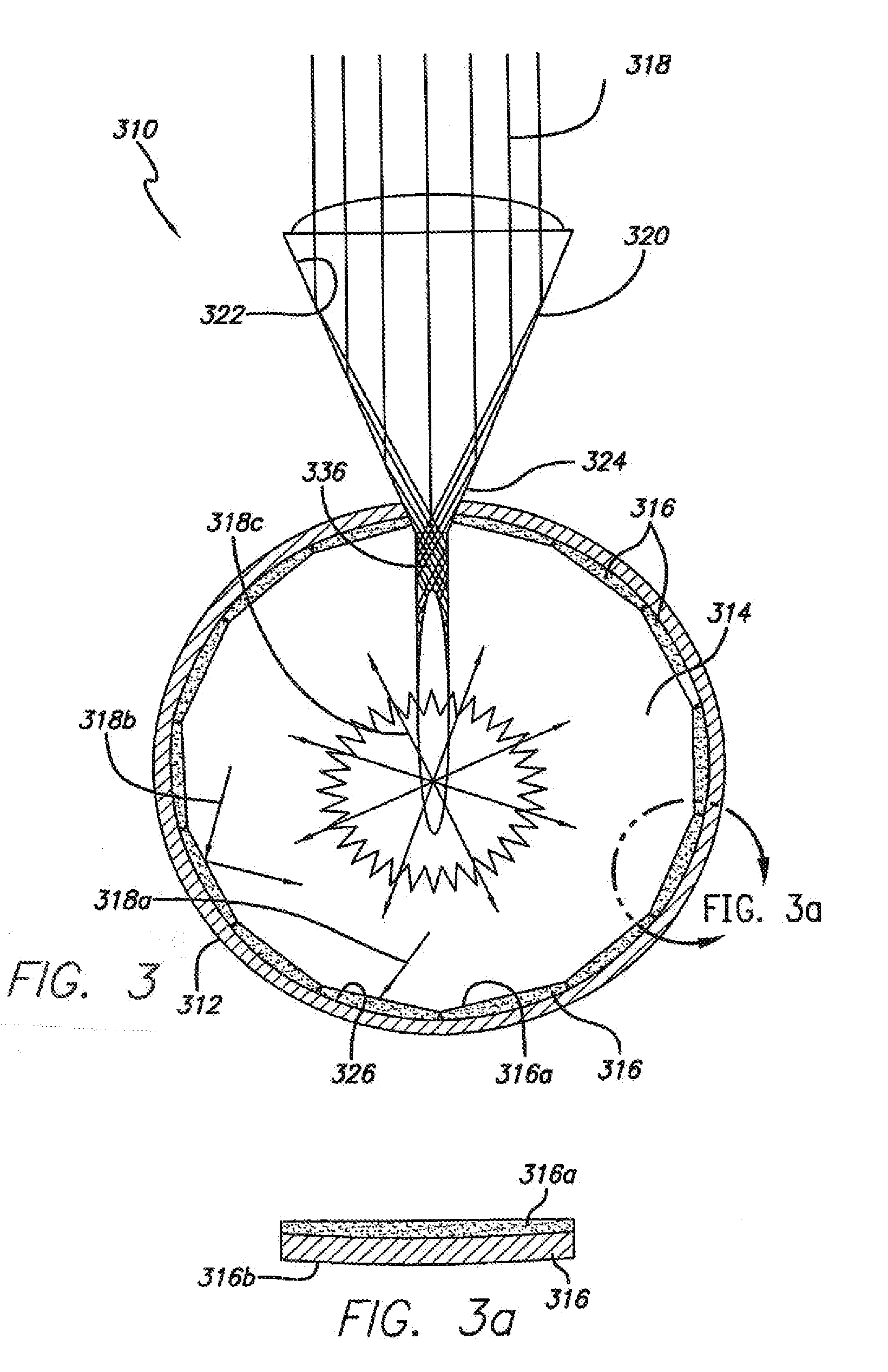Integrating sphere photovoltaic receiver (powersphere) for laser light to electric power conversion
a photovoltaic receiver and laser light technology, applied in the field of laser power beaming and photovoltaic cells, can solve the problems of increasing the temperature of the solar cell, wasting the remainder of available energy outside of their limited spectral response, and reducing the efficiency of the solar cell
- Summary
- Abstract
- Description
- Claims
- Application Information
AI Technical Summary
Problems solved by technology
Method used
Image
Examples
Embodiment Construction
[0033]Reference is now made in detail to a specific embodiment of the present invention, which illustrates the best mode presently contemplated by the inventor for practicing the invention. Alternative embodiments are also briefly described as applicable.
[0034]The embodiments herein are directed to an integrating sphere photovoltaic (PV) receiver, or module, for converting laser light into electric power. The receiver is called a “PowerSphere”.
[0035]The basic concept of the PowerSphere is based on a photovoltaic cavity converter (PVCC) module that has been designed for a concentration in the range of 500 to over 1000 suns and a power output range of a few kilowatts to 50 kWe when combined with a primary dish and a secondary concentrator. That PVCC module is disclosed and claimed in the above-identified parent application, now U.S. Pat. No. ______. The PVCC module herein is expected to find use in, for example, DOE's Concentrating Solar Power (CSP) program to develop systems in the 1...
PUM
 Login to View More
Login to View More Abstract
Description
Claims
Application Information
 Login to View More
Login to View More - R&D
- Intellectual Property
- Life Sciences
- Materials
- Tech Scout
- Unparalleled Data Quality
- Higher Quality Content
- 60% Fewer Hallucinations
Browse by: Latest US Patents, China's latest patents, Technical Efficacy Thesaurus, Application Domain, Technology Topic, Popular Technical Reports.
© 2025 PatSnap. All rights reserved.Legal|Privacy policy|Modern Slavery Act Transparency Statement|Sitemap|About US| Contact US: help@patsnap.com



